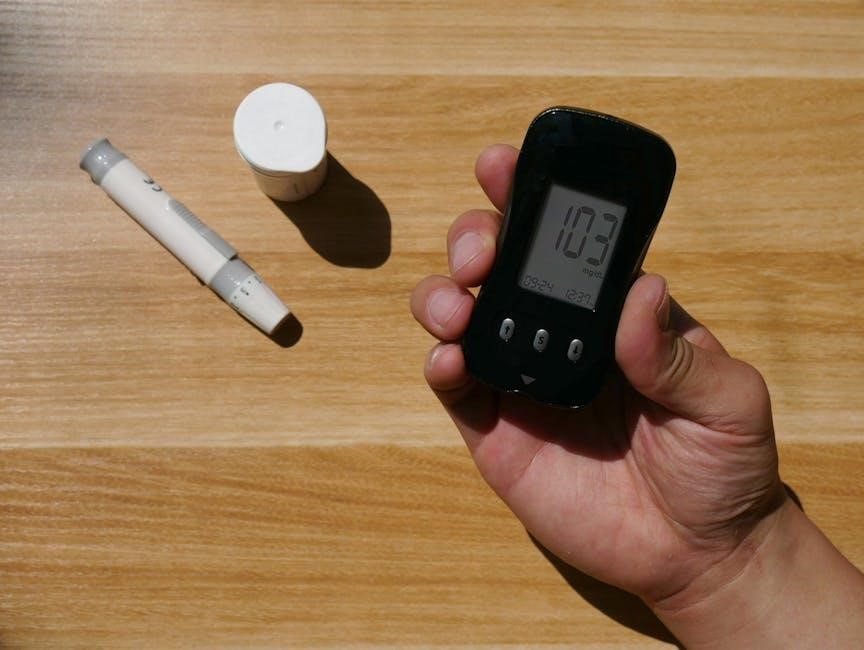Executive Summary
The growing demand for in-home care, driven by an aging population, presents a lucrative opportunity for entrepreneurs. This business plan outlines strategies to establish a thriving home health care service, addressing market needs and providing high-quality patient care while ensuring sustainable growth and profitability.
1.1. Company Overview
Our home health care agency is dedicated to providing compassionate, high-quality care to individuals in the comfort of their own homes. We specialize in offering skilled nursing, personal care, and rehabilitation services tailored to meet the unique needs of our clients. With a focus on improving patient outcomes and enhancing quality of life, our experienced team delivers personalized care with integrity and professionalism. Our mission is to be the preferred choice for home health care services, ensuring accessibility, affordability, and exceptional patient satisfaction.
1.2. Mission Statement
Our mission is to deliver compassionate, high-quality home health care services that empower individuals to live independently and dignified lives in the comfort of their homes. We are committed to providing personalized care tailored to each patient’s unique needs, ensuring their well-being and quality of life. With a focus on integrity, professionalism, and patient-centered care, we strive to make a meaningful difference in the lives of our clients and their families, setting the standard for excellence in home health care.
1.3. Vision and Objectives
Our vision is to become the leading provider of compassionate, patient-centered home health care services, enhancing the quality of life for individuals in need. Our objectives include expanding access to skilled nursing, rehabilitation, and personal care services while maintaining the highest standards of excellence. We aim to foster trust and reliability through transparent communication and personalized care plans. By leveraging innovative technologies and a dedicated team, we strive to deliver exceptional outcomes, ensuring our clients receive the support they need to thrive in the comfort of their homes.

Market Analysis
The home health care market is booming, valued at $390.24 billion in 2023, driven by an aging population and a preference for in-home care, presenting a strategic opportunity.
2.1. Industry Overview
The home health care industry is rapidly expanding, driven by an aging population and a shift toward cost-effective, patient-centric care. Valued at $390.24 billion in 2023, the sector offers skilled nursing, rehabilitation, and personal care services, addressing diverse patient needs. With increasing demand for in-home care, the industry is becoming a preferred alternative to traditional hospital settings. Providers must differentiate through high-quality services, technological integration, and compliance with regulatory standards to thrive in this competitive market. This growth presents significant opportunities for entrepreneurs and established players alike.
2.2. Target Market
The target market for home health care services includes elderly individuals requiring daily assistance, patients with chronic illnesses needing ongoing medical support, and disabled persons requiring specialized care. Families seeking reliable in-home care for loved ones also represent a significant demographic. Urban and suburban areas with aging populations are key focus regions. Understanding these groups’ specific needs ensures tailored service offerings, enabling the business to address gaps in care and deliver personalized, compassionate support, ultimately fostering long-term client relationships and market loyalty.
2.3. Market Trends
The home health care industry is experiencing significant growth due to an aging population and increased preference for in-home care. Advances in telehealth technologies are enabling remote patient monitoring and virtual consultations, enhancing service delivery. Personalized care plans tailored to individual needs are becoming a key differentiator. Additionally, there is a rising demand for holistic care that addresses not only medical but also emotional and social well-being. These trends underscore the importance of adaptability and innovation in meeting evolving patient expectations and maintaining a competitive edge in the market.
2.4. Competitive Analysis
The home health care market is highly competitive, with numerous agencies offering skilled nursing, personal care, and rehabilitation services. Key competitors include established players with extensive resources and newer entrants leveraging technology. Differentiation lies in service quality, staff expertise, and personalized care plans. Agencies focusing on niche markets, such as geriatric or post-surgery care, gain an edge. Emphasizing reliability, compassion, and innovation will help carve a unique market position. Understanding competitors’ strengths and weaknesses is crucial for strategic positioning and capturing market share effectively.

Services Offered

Our agency provides skilled nursing, personal care, rehabilitation, and additional support services, ensuring comprehensive care tailored to meet patients’ medical and personal needs at home.
3.1. Skilled Nursing Services
Our skilled nursing services include wound care, IV therapy, and pain management, delivered by licensed professionals in the comfort of patients’ homes. These services are designed to address complex medical needs, ensuring continuity of care and promoting recovery. Nurses are trained to handle chronic conditions, post-surgical recovery, and rehabilitation, offering personalized attention and expertise. This service is tailored to meet the unique requirements of each patient, providing a cost-effective alternative to hospitalization while maintaining high standards of care and improving quality of life.
3.2. Personal Care Services
Our personal care services focus on assisting clients with daily living activities, including bathing, grooming, and mobility support. These services are tailored for elderly individuals, disabled persons, and those recovering from illness or surgery. Caregivers are trained to provide compassionate assistance, enabling clients to maintain independence and dignity in their homes. This service includes light housekeeping, meal preparation, and companionship, ensuring a holistic approach to care. By addressing non-medical needs, we enhance overall well-being and quality of life for our clients, offering peace of mind for their families.
3.3. Rehabilitation Services
Our rehabilitation services are designed to help patients recover and regain independence in the comfort of their homes. We offer physical, occupational, and speech therapies tailored to individual needs. These services are delivered by licensed professionals, ensuring patients achieve optimal recovery outcomes. Rehabilitation plans are personalized to address specific goals, such as improving mobility, strength, or cognitive function. By providing these services at home, we reduce hospital readmissions and enhance the overall recovery process, helping patients return to their daily lives with confidence and independence.
3.4. Additional Services
Beyond our core offerings, we provide complementary services to enhance patient care and well-being. These include respite care, meal preparation, and transportation assistance. Additionally, we offer companionship services to combat loneliness and improve mental health. Our telehealth options allow remote monitoring and consultations, ensuring continuous care. We also provide medication management and education to patients and their families. These services are tailored to meet individual needs, ensuring a comprehensive and supportive care experience that goes beyond traditional home health care, fostering independence and improving quality of life for our clients.

Marketing and Sales Strategy
Our strategy focuses on branding, digital marketing, and community partnerships to promote our services. We emphasize online presence, client testimonials, and direct outreach to healthcare providers and families.
4.1. Branding and Positioning
The home health care business will position itself as a trusted, compassionate provider of high-quality in-home care. Branding will emphasize reliability, professionalism, and patient-centered services. By targeting the aging population and those requiring medical care, the brand will highlight skilled nursing, rehabilitation, and personal care services. Strategic positioning includes emphasizing convenience, affordability, and personalized care plans. The brand will also focus on building trust through testimonials, partnerships with healthcare providers, and community outreach programs. This approach ensures the business stands out in a competitive market while aligning with the growing demand for in-home care solutions.
4.2. Marketing Channels
The business will leverage a multi-channel marketing approach to reach its target audience. Digital marketing strategies include a professional website with SEO optimization, social media engagement on platforms like Facebook and Instagram, and targeted online ads. Email marketing campaigns will be used to nurture leads and share educational content. Partnerships with local hospitals, clinics, and healthcare providers will enhance credibility and referrals. Additionally, community events, print ads in senior-focused publications, and a referral program will be implemented to build brand awareness and attract clients.
4.3. Sales Strategy
The sales strategy focuses on building relationships with healthcare providers, hospitals, and insurance companies to generate referrals. A dedicated sales team will engage in face-to-face meetings, host seminars, and participate in industry events to promote services. Online lead generation will complement direct outreach efforts, ensuring a steady pipeline of potential clients. Personalized consultations and tailored care proposals will emphasize the company’s commitment to patient-centric care, fostering trust and long-term partnerships with clients and stakeholders.
4.4. Client Acquisition
Client acquisition will focus on building strong relationships with healthcare providers, hospitals, and insurance companies to secure referrals. A referral program will incentivize current clients and partners to recommend services. Community outreach, such as seminars and workshops, will educate families about the benefits of in-home care. Digital marketing campaigns will target demographics with the greatest need, ensuring visibility and accessibility. By fostering trust and delivering exceptional service, the company will attract and retain clients, establishing itself as a leader in the home health care industry.

Operations Plan
The operations plan outlines staffing, recruitment, and training processes to ensure high-quality home health care delivery. It includes protocols for patient assessments, care coordination, and compliance with regulations to maintain operational efficiency and patient satisfaction.
5.1. Staffing and Recruitment
Recruiting skilled and compassionate professionals is critical to delivering high-quality home health care. The agency will hire licensed nurses, aides, and therapists, ensuring all staff undergo thorough background checks and interviews. A comprehensive training program will be implemented to ensure staff are equipped with the latest care techniques and regulatory compliance. Ongoing education and performance evaluations will be conducted to maintain high standards. Competitive compensation, benefits, and a supportive work environment will be prioritized to attract and retain top talent, ensuring consistent and reliable patient care.
5.2. Home Care Delivery Process
The delivery of home care services begins with a comprehensive patient assessment to identify specific needs and preferences. A personalized care plan is then developed, outlining services such as skilled nursing, therapy, or personal care. Licensed professionals deliver care in the comfort of patients’ homes, adhering to high standards of quality and safety. Regular monitoring and communication with healthcare providers ensure continuity and adaptability. The process emphasizes patient-centered care, fostering independence, and improving overall well-being while maintaining flexibility to address evolving needs effectively.
5.3. Legal and Regulatory Compliance
Ensuring legal and regulatory compliance is critical for a home health care business. The agency must obtain necessary state and federal certifications, adhere to HIPAA guidelines, and meet local licensing requirements. Regular audits and staff training on compliance issues are essential to maintain high standards. The business must also stay updated on changing regulations to avoid penalties and ensure patient trust. Compliance with industry standards ensures the delivery of safe, ethical, and high-quality care, fostering a reputation for reliability and professionalism in the home health care sector.
5.4. Technology Integration
Technology plays a vital role in modern home health care, enhancing efficiency and patient outcomes. Implementing electronic health records (EHRs) ensures seamless data management and secure sharing of patient information. Automated scheduling systems optimize caregiver assignments, while telehealth platforms enable remote consultations. Real-time monitoring devices track patient conditions, improving care quality. Secure platforms protect sensitive data, adhering to HIPAA standards. Integrating these technologies streamlines operations, reduces errors, and enhances patient engagement. A tech-driven approach positions the agency as innovative and patient-centered, fostering trust and long-term success in the competitive home health care market.

Financial Projections
The home health care industry, valued at $390.24 billion in 2023, is projected to grow significantly. This business plan outlines revenue streams, expense analysis, and profitability projections, ensuring sustainable financial growth.
6.1. Revenue Streams
Revenue streams for a home health care business include skilled nursing services, personal care, rehabilitation, and additional services like palliative care or specialized therapy. These services are tailored to meet the growing demand for in-home care, driven by an aging population and preferences for home-based treatment. Diversifying revenue streams ensures financial stability and reduces dependency on a single service type. Partnerships with healthcare providers and insurance companies can also generate steady referrals and payments. Effective financial planning and projections are essential to maintain profitability while delivering high-quality patient care.
6.2. Expense Analysis
The primary expenses for a home health care business include staffing costs, which are the largest, followed by training programs, medical supplies, and transportation for caregivers. Operational expenses also cover insurance, marketing, and administrative costs. Understanding these expenses is crucial for budgeting and ensuring profitability. Regular financial reviews help manage costs effectively and align spending with revenue projections, ensuring sustainable growth while maintaining high-quality patient care services.
6.3. Break-Even Analysis
A break-even analysis determines the point at which the home health care business’s revenues equal its expenses. This calculation is crucial for understanding profitability timelines. Factors such as average revenue per patient, number of patients served, and monthly fixed and variable costs are considered. By analyzing these elements, the business can identify when it will begin generating profits. This analysis also helps in making informed decisions about pricing, service expansion, and cost management to ensure long-term financial sustainability and stability in the competitive home health care market.
6.4. Funding Requirements
The home health care business requires initial funding to cover startup costs, including licensing, staff training, and equipment. The total funding needed is estimated at $250,000, which will be allocated to operational setup, marketing, and technology integration. Potential funding sources include bank loans, private investors, and government grants. A detailed financial projection demonstrates the ability to repay loans and generate returns for investors. This section outlines the funding strategy, ensuring clarity on how capital will be utilized to achieve business objectives and sustain growth in the competitive home health care market.

Management and Organization
The agency will operate under a clear ownership structure, with experienced healthcare professionals leading key roles. The management team includes a CEO, Nursing Director, and Operations Manager, ensuring efficient service delivery and compliance with industry standards.
7.1. Ownership Structure

The home healthcare agency operates as a private LLC, with ownership shared among key executives. The CEO, Nursing Director, and Operations Manager hold majority stakes, ensuring active involvement and expertise. This structure allows for streamlined decision-making while leveraging each owner’s specialized skills. The ownership model fosters accountability and aligns interests, promoting sustainable growth and quality care delivery. Clear roles and shared responsibilities ensure operational efficiency and adherence to regulatory standards, positioning the agency for long-term success in the competitive home healthcare market. This balanced ownership structure supports both strategic vision and day-to-day operations effectively.
7.2. Organizational Chart
The home healthcare agency follows a hierarchical structure with clear reporting lines. At the top is the CEO, overseeing overall strategy and operations. The Nursing Director manages clinical services, while the Operations Manager handles logistics and staff coordination. HR Manager focuses on recruitment and training, ensuring a skilled workforce. Client Care Coordinators manage patient assignments and satisfaction. Beneath them are staff nurses, home care aides, and administrative support. This structure ensures efficient communication, role clarity, and effective service delivery, aligning with the agency’s mission to provide high-quality, patient-centric care.
7.3. Key Personnel
The success of the home healthcare agency relies on its experienced leadership and skilled team. The CEO provides strategic direction and oversees overall operations. The Nursing Director ensures high-quality clinical care and compliance with medical standards. The Operations Manager handles day-to-day activities, including staffing and patient scheduling. The HR Manager focuses on recruitment, training, and employee retention. Client Care Coordinators manage patient relationships and tailor care plans to individual needs; Together, these key personnel ensure the agency delivers compassionate, professional, and effective home healthcare services, fostering trust and satisfaction among clients and their families.
7.4. Staff Training Programs
To ensure exceptional patient care and operational excellence, the agency implements comprehensive staff training programs. These programs cover compliance with legal and regulatory standards, clinical skills development, and soft skills like communication and empathy. Training begins with an extensive onboarding process and continues with regular workshops and certifications. Ongoing education keeps staff updated on industry trends and best practices. Additionally, technology training ensures efficient use of care management software. This commitment to continuous learning fosters a skilled, compassionate workforce dedicated to delivering high-quality home healthcare services and improving patient outcomes.

Appendix
This section includes additional resources, such as a downloadable PDF template and sample business plans, to support the development of a comprehensive home health care business plan.
9.1. Sample Business Plan Template
A downloadable PDF template is provided to guide the creation of a comprehensive home health care business plan. This template includes pre-written sections for Executive Summary, Market Analysis, Services Offered, Marketing Strategy, Financial Projections, and more. It offers customizable fields to input specific business details, ensuring a professional and structured approach. The template is designed to save time and effort, providing a clear framework for entrepreneurs to outline their vision, goals, and operational strategies effectively. It also includes examples and prompts to help users tailor each section to their unique needs.
9.2. PDF Download Instructions
To access the home health care business plan PDF, visit the provided website and navigate to the download section. Fill in the required details, such as name and email, to receive the link. The PDF template is free and includes pre-written sections for each part of the plan. Once downloaded, you can customize it using Word or PDF editors. This resource is designed to simplify the planning process, ensuring a professional and structured approach to launching your home health care business.
